Thermo Fisher Scientific Phire Green Hot Start II PCR Master Mix User guide
- Type
- User guide

PRODUCT INFORMATION
Thermo Scientific
Phire Green Hot Start II PCR Master Mix
Pub. No. MAN0013357
Rev. Date 21 November 2016 (Rev. B.00)
#_
Lot _ Expiry Date _
Store at -20 °C
Ordering information
Component
#F-126S
200 rxns
200 × 50 µL rxns
#F-126L
1000 rxns
1000 × 50 µL rxns
2X Phire Green Hot
Start II PCR Master Mix
4 × 1.25 mL
20 × 1.25 mL
100% DMSO
1 × 0.5 mL
4 × 0.5 mL
Water, nuclease free
4 × 1.25 mL
20 × 1.25 mL
www.thermofisher.com
For Research Use Only. Not for use in diagnostic procedures.
1.Introduction
Thermo Scientific™ Phire™ Hot Start II DNA Polymerase is a
unique DNA polymerase designed for use in all routine and high
throughput PCR applications. A special DNA-binding domain
linked to the Phire DNA Polymerase enhances the processivity
of the polymerase, enabling short extension times and improved
yields. The polymerase is also capable of amplifying long DNA
fragments, such as the 7.5 kb genomic DNA used in Thermo
Scientific quality control assays. Phire Hot Start II DNA
Polymerase provides 2-fold fidelity compared to Taq DNA
polymerase.
The hot start modification of the polymerase is based on the
AffibodyTM inactivation method.1,2 It inhibits DNA polymerase
activity at ambient temperatures, thus preventing amplification of
non-specific products. At polymerization temperatures the
Affibody molecule is released, rendering the polymerase fully
active.
Phire Hot Start II DNA Polymerase generates blunt ends in the
amplification products. It does not possess the 5´→3´
exonuclease activity needed for hydrolysis experiments.
Phire Green Hot Start II PCR Master Mix is a convenient 2X mix
containing Phire Hot Start II DNA Polymerase, nucleotides and
optimized reaction buffer including MgCl2. Only template and
primers need to be added by the user.
The master mix also includes a density reagent and two tracking
dyes for direct loading of PCR products on a gel. The dyes do
not interfere with PCR performance and are compatible with
downstream applications such as DNA sequencing, ligation and
restriction digestion. For applications that require PCR product
analysis by absorbance or fluorescence excitation, we
recommend using the colorless Phire Hot Start II PCR Master
Mix (#F-125S) or purifying the PCR product prior to analysis.
2. Important Notes
Use 98 °C for denaturation. (See 5.1 & 5.2)
The annealing rules are different from many common DNA
polymerases (such as Taq DNA polymerases). Read
Section 5.3 carefully before setting annealing temperature.
Use 10–15 s/kb for extension. (See 5.4)
Phire Hot Start II DNA Polymerase produces blunt end DNA
products.
3. Setting up PCR reactions using Phire Hot Start II
PCR Master Mix
Carefully mix and centrifuge all tubes before opening to ensure
homogeneity and improve recovery. When using Phire Green
Hot Start II PCR Master Mix, it is not necessary to perform the
PCR setup on ice.
Due to the unique nature of Phire Hot Start II DNA Polymerase,
optimal reaction conditions may differ from standard enzyme
protocols. Phire Hot Start II DNA Polymerase tends to work
better at elevated denaturation and annealing temperatures due
to higher salt concentrations in its buffer. Please pay special
attention to the conditions listed in section 5 when running your
reactions. Following the guidelines will ensure optimal enzyme
performance.
Table 1. Pipetting instructions: add items in this order.
Component
20 μL rxn
50 μL rxn
Final conc.
H2O
add to 20 μL
add to 50 μL
2X Phire Green
HS II Master Mix
10 μL
25 μL
1X
Forward primer *
X μL
X μL
0.5 μM
Reverse primer *
X μL
X μL
0.5 μM
Template DNA
X μL
X μL
(DMSO**,
optional)
(0.6 μL)
(1.5 μL)
(3%)
* The recommendation for final primer concentration is 0.5 μM, but it can be varied in
a range of 0.2–1.0 μM, if needed.
** Addition of DMSO is recommended for GC-rich amplicons. DMSO is not
recommended for amplicons with very low GC %.
Table 2. Cycling instruction
Cycle step
2-step protocol
3-step protocol
Cycles
Temp.
Time
Temp.
Time
Initial
Denaturation
98 °C
30 s
98 °C
30 s
1
Denaturation
Annealing
(see 5.3)
Extension
(see 5.4)
98 °C
–
72 °C
5 s
–
10–15 s/kb
98 °C
X °C
72 °C
5 s
5 s
10–15 s/kb
25–35
Final
extension
72 °C
4 °C
1 min
hold
72 °C
4 °C
1 min
hold
1
Poduct Inormation
4. Notes about reaction components
4.1. 2X Phire Green Hot Start II PCR Master Mix
Phire Green Hot Start II PCR Master Mix contains all the
necessary reaction components except for template DNA and
primers. The master mix provides 1.5 mM MgCl2 and 200 µM of
each dNTP in final reaction concentration. Phire Hot Start II DNA
Polymerase concentration is optimized to give good results in
most reactions.
4.2. Template
For low complexity DNA (e.g. plasmid, lambda or BAC DNA) it is
recommended to use 2.5 pg–25 ng per 50 μL reaction volume.
For high complexity genomic DNA, the amount of DNA template
should be 25–250 ng per 50 μL reaction volume.
If cDNA synthesis reaction mixture is used as a source of
template, the volume of the template should not exceed 10% of
the final PCR reaction volume.
4.4. PCR additives
The recommended reaction conditions for GC-rich templates
include 3% DMSO as a PCR additive, which aids in the
denaturing of templates with high GC contents. For further
optimization DMSO should be varied in 2% increments. In some
cases DMSO may also be required for supercoiled plasmids to
relax for denaturation. If high DMSO concentration is used, the
annealing temperature must be decreased, as DMSO affects the
melting point of the primers. It has been reported that 10%
DMSO decreases the annealing temperature by 5.5–6.0 °C.3
5. Notes about cycling conditions
5.1. Initial denaturation
Denaturation should be performed at 98 °C. Due to the high
thermostability of Phire Hot Start II DNA Polymerase even higher
than 98 °C denaturation temperatures can be used. We
recommend 30 seconds initial denaturation at 98 °C for most
templates. Some templates may require longer initial
denaturation time and the length of the initial denaturation time
can be extended up to 3 minutes.
5.2. Denaturation
Keep the denaturation as short as possible. Usually
5 seconds at 98 °C is enough for most templates.
Note: The denaturation time and temperature may vary
depending on the ramp rate and temperature control mode of
the cycler.
5.3. Primer annealing
The optimal annealing temperature for Phire Hot Start II DNA
Polymerase may be significantly different than annealing
temperature with other DNA polymerases. Always use the
Tm calculator and instructions on our website
(www.thermofisher.com/tmcalculator) to determine the Tm values
of your primers and optimal annealing temperature.
As a basic rule, for primers > 20 nt, anneal for 5 seconds at a
Tm +3 °C of the lower Tm primer. For primers ≤ 20 nt, use an
annealing temperature equal to the Tm of the lower Tm primer. If
necessary, use a temperature gradient to find the optimal
annealing temperature for each template-primer pair
combination. The annealing gradient should extend up to the
extension temperature (two-step PCR).
Two-step cycling without annealing step is also recommended
for high Tm primer pairs.
5.4. Extension
The extension should be performed at 72 °C. Extension time of
10 seconds per 1 kb is recommended for most templates.
However, higher yields may be obtained using extension time of
15 s/kb with challenging primer-template pairs.
6. Cloning recommendations
Blunt end cloning is recommended when cloning DNA fragments
amplified with Phire Green Hot Start II PCR Master Mix. If TA
cloning is required, it is necessary to add A overhangs to the
PCR product (with Thermo Scientific Taq DNA Polymerase, for
example). A detailed protocol for TA cloning of fragments
amplified with Phire Green Hot Start II PCR Master Mix can be
found on our website www.thermofisher.com.
(continued on reverse page)

7. Troubleshooting
No product at all or low yield
Repeat and make sure
that there are no pipetting
errors.
Titrate template amount.
Template DNA may be
damaged. Use carefully
purified template.
Increase extension time.
Increase the number of
cycles.
Optimize annealing
temperature.
Titrate DMSO (2–8%) in
the reaction.
Denaturation temperature
may be too low. Optimal
denaturation temperature
for most templates is
98 °C or higher.
Optimize denaturation
time.
Check the purity and
concentration of the
primers.
Check primer design.
Non-specific products - High molecular weight smears
Shorten extension time.
Reduce the total number
of cycles.
Increase annealing
temperature or try 2-step
protocol.
Vary denaturation
temperature
Decrease primer
concentration.
Non-specific products - Low molecular weight discrete
bands
Increase annealing
temperature
Shorten extension time.
Titrate template amount.
Decrease primer
concentration.
Design new primers.
8. References
1. Nord K. et al. (1997) Nature Biotechnol.15: 772−777.
2. Wikman M. et al. (2004) Protein Eng., Des. Sel.17: 455−462.
3. Chester N. & Marshak D.R. (1993) Analytical Biochemistry
209: 284–290.
CERTIFICATE OF ANALYSIS
DNA amplification assay
Performance in PCR is tested by the amplification of a 7.5 kb
fragment of genomic DNA.
Quality authorized by: Jurgita Zilinskiene
NOTICE TO PURCHASE:LIMITED LICENSE
The purchase price of this product includes a limited, non-
transferable license under U.S. and foreign patents owned by
BIO-RAD Laboratories, Inc., to use this product. No other license
under these patents is conveyed expressly or by implication to
the purchaser by the purchase of this product.
LIMITED USE LABEL LICENSE: Internal Research and
Development Use Only.
The purchase of this product conveys to the buyer the limited,
non-exclusive, non-transferable right (without the right to resell,
repackage, or further sublicense) to use this product for internal
research and development purposes. No other license is granted
to the buyer whether expressly, by implication, by estoppel or
otherwise. In particular, the purchase of the product does not
include or carry any right or license to use, develop, or otherwise
exploit this product commercially and no rights are conveyed to
the buyer to use the product or components of the product for
purposes including but not limited to provision of services to a
third party, generation of commercial databases or clinical
diagnostics. This product is sold pursuant to authorization from
Thermo Fisher Scientific and Thermo Fisher Scientific reserves
all other rights. For information on purchasing a license for uses
other than internal research and development purposes, please
contact [email protected] or Out Licensing, Life
Technologies Inc., 5781 Van Allen Way, Carlsbad, California
92008.
PRODUCT USE LIMITATION
This product is developed, designed and sold exclusively for
research purposes and in vitro use only. The product was not
tested for use in diagnostics or for drug development, nor is it
suitable for administration to humans or animals. Please refer to
www.thermofisher.com for Material Safety Data Sheet of the
product.
© 2016 Thermo Fisher Scientific, Inc. All rights reserved.
Affibody is a registered trademark of Affibody AB, Sweden. All
other trademarks are the property of Thermo Fisher Scientific
Inc. and its subsidiaries.
-
 1
1
-
 2
2
Thermo Fisher Scientific Phire Green Hot Start II PCR Master Mix User guide
- Type
- User guide
Ask a question and I''ll find the answer in the document
Finding information in a document is now easier with AI
Related papers
-
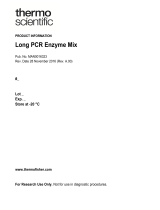 Thermo Fisher Scientific Long PCR User guide
Thermo Fisher Scientific Long PCR User guide
-
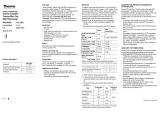 Thermo Fisher Scientific Thermo-Start Taq DNA Polymerase, AB0908 User guide
Thermo Fisher Scientific Thermo-Start Taq DNA Polymerase, AB0908 User guide
-
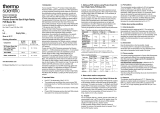 Thermo Fisher Scientific Phusion Green Hot Start II High-Fidelity PCR Master Mix User guide
Thermo Fisher Scientific Phusion Green Hot Start II High-Fidelity PCR Master Mix User guide
-
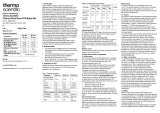 Thermo Fisher Scientific Phusion Blood Direct PCR Master Mix User guide
Thermo Fisher Scientific Phusion Blood Direct PCR Master Mix User guide
-
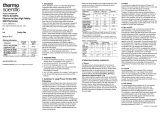 Thermo Fisher Scientific Phusion Hot Start High-Fidelity DNA Polymerase User guide
Thermo Fisher Scientific Phusion Hot Start High-Fidelity DNA Polymerase User guide
-
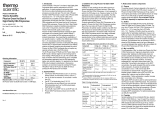 Thermo Fisher Scientific Phusion Green Hot Start II High-Fidelity DNA Polymerase User guide
Thermo Fisher Scientific Phusion Green Hot Start II High-Fidelity DNA Polymerase User guide
-
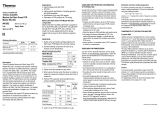 Thermo Fisher Scientific Maxima Hot Start Green PCR Master Mix, k1062 User guide
Thermo Fisher Scientific Maxima Hot Start Green PCR Master Mix, k1062 User guide
-
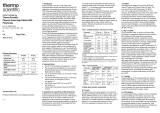 Thermo Fisher Scientific Phusion Green High-Fidelity DNA Polymerase User guide
Thermo Fisher Scientific Phusion Green High-Fidelity DNA Polymerase User guide
-
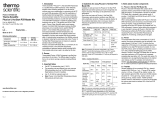 Thermo Fisher Scientific Phusion U Hot Start PCR Master Mix User guide
Thermo Fisher Scientific Phusion U Hot Start PCR Master Mix User guide
-
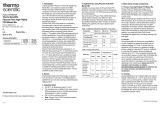 Thermo Fisher Scientific Phusion Flash High-Fidelity PCR Master Mix User guide
Thermo Fisher Scientific Phusion Flash High-Fidelity PCR Master Mix User guide











